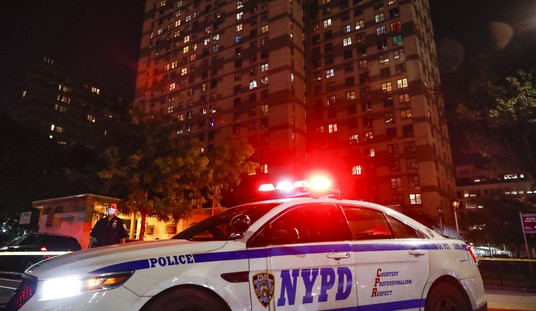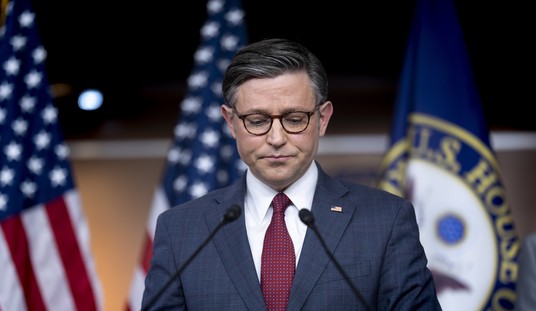What happens when an irresistible force meets an immoveable object?
That's one question raised by the 2016 presidential campaign.The immoveable object is the close and bitter partisan division that has prevailed in general elections for the last two decades. The irresistible force is the corrosive discontent of American voters, their sense that the nation is headed off on the wrong track and that experienced leaders are more the problem than the solution.
The partisan divide may remain, in the end, stalwart. In that case, it becomes easy to forecast the shape of the presidential race but hard to predict the winner. In this century's presidential elections Republicans and Democrats have won between 46 and 53 percent of the vote -- in historic perspective, a narrow range. No nominee has come close to winning the 57 to 61 percent landslides registered by Democrats and Republicans in 1936, 1956, 1964, 1972 and 1984.
The same phenomenon has been apparent in congressional elections, which have been a good proxy for support of the president and his party since the middle 1990s. In nine of 11 elections starting in 1994, Republicans have won between 48 and 52 percent of the popular vote for the House and Democrats between 44 and 49 percent -- again, a historically narrow range. The two exceptions were in 2006 and 2008, when George W. Bush's job approval plunged to 30-percent levels, when Democrats won 53 and 54 percent and Republicans 45 and 43 percent. Democrats hoped that would turn out to be a new normal, but in 2010, 2012 and 2014 the House popular vote swung back to the 1994-2004 range.
Some pollsters report an increasing percentage of voters identifying as Independents. But fewer and fewer Americans vote that way. Straight-ticket voting, rare from the 1960s through the 1980s, has become more common today. In 2012 only 26 of the 435 House districts voted for a presidential candidate of one party and a House member of the other -- the lowest number since 1920.
Recommended
Presidential voting has become more predictable as well. Only three of the 50 states (Iowa, New Mexico, New Hampshire) voted for different parties' candidates in the 2000 and 2004 elections. Only two states (Indiana, North Carolina) voted for different parties' candidates in 2008 and 2012. You have to go back to the 1880s to find such partisan continuity.
There was a bigger swing in presidential voting between 2004 and 2008. But even then only nine of the 50 states switched parties, and six of those had been carried narrowly, with 50 to 52 percent of the vote, by George W. Bush. Of the other three, Indiana switched back to solidly Republican in 2012, North Carolina moved narrowly from Barack Obama to Mitt Romney and Virginia has, perhaps implausibly, become the national bellwether, with its percentages for the candidates matching national percentages more closely than any other state.
Hence the now-familiar division between Republican "red states" (23 of them, with 191 electoral votes), Democratic "blue states" (16 states plus D.C., with 212 electoral votes) and "purple states" (11 states, all furiously contested in 2012, with 135 electoral votes). In this century only one red state has voted Democratic (Indiana in 2008) and no blue state has voted Republican; few have ever been close.
So it's reasonable to conclude that if the immoveable object of stark partisan division remains immoveable, the contours of the 2016 presidential vote will look much like those in recent elections.
But what if the irresistible force scrambles the political map? It has always happened, sooner or later, in American politics, and it has often been sparked by the rise of a disruptive candidate, running as an independent or as nominee of a major party. Think Ross Perot, Ronald Reagan, George Wallace, Franklin Roosevelt, William Jennings Bryan, Abraham Lincoln. A disruptive candidate raises new issues, breaks across old party lines and brings new voters into the electorate.
Is something like that happening now? One data that suggests as much is the stunningly high viewership of the two Republican presidential debates -- 24 million in August and 23 million in September. That's nearly three times the largest previous audience of 8 million.
Perhaps much of this increase can be chalked up to the celebrity of Donald Trump, but not all. Much may be due to the seemingly irresistible force of public discontentment. And that could impact the seemingly immoveable object of steady partisan attachments. For those patterns can be disrupted by a factor pollsters have trouble projecting: turnout.
The biggest surge of turnout in this century occurred not during the Obama years, but during the Bush presidency. In 2004 presidential turnout increased by 17 million. George W. Bush received 11.5 million more votes than he had four years before, and John Kerry received 8 million more than Al Gore had four years before.
The sharp increase in debate audiences this year gives Republicans some hope that their party can expand the electorate. The much smaller, but still significant, increase in Democratic viewership gives their party some basis for hoping they may expand the electorate as they did in 2008, when Barack Obama received 10.5 million more votes than John Kerry. But the force of discontent seems more likely to work against the party now holding the White House than the party better positioned to cast itself as a force for change.
























Join the conversation as a VIP Member